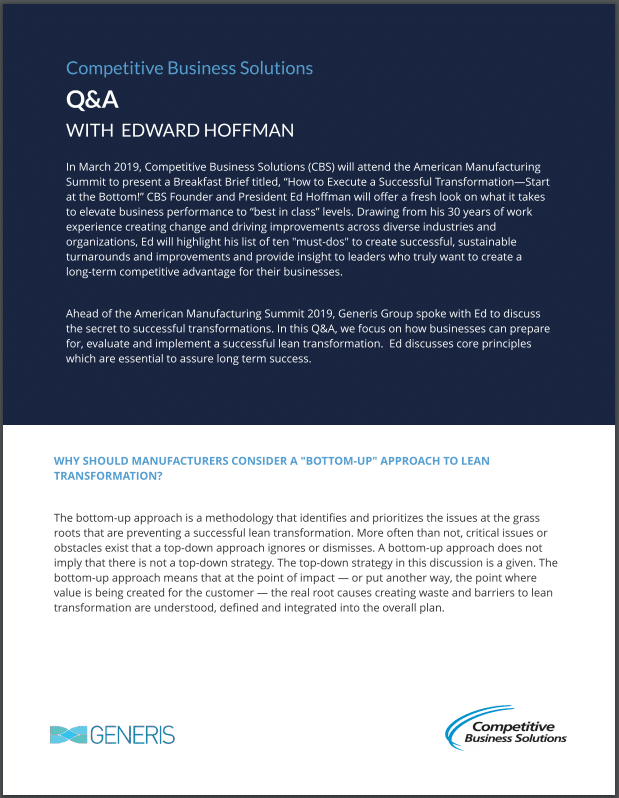Recent advances in technology have changed everything from the way we drive our cars to the way we do business. In manufacturing, it’s completely revolutionizing the way the industry operates.
Disruptive technologies like cloud computing and the Internet of Things (IoT) are providing manufacturers with the opportunity to improve quality, shorten production times, and substantially reduce operational costs.
In today’s manufacturing landscape, the only way to maintain a competitive advantage is to leverage these technologies and embrace change. So what technologies are making the biggest impact, and what can we expect to see in the factories of the future?
3D Printing
From its humble beginnings as a one-dimensional prototyping service, 3D printing, also referred to as additive manufacturing, has evolved into a $7.3 billion industry that now helps power the world of innovative manufacturing.
As outlined in an interview with Forecast 3D, the benefits of utilizing additive manufacturing range from design flexibility to cost.
Design Flexibility and Customization: 3D printing allows for the creation of extremely intricate designs and complex geometries that would often be complicated or even impossible to produce with traditional manufacturing methods. With additive manufacturing, customers can reiterate their designs and have updated parts quickly. With injection molding, tooling changes are required for every little design tweak, often resulting in production delays.
Speed of production: One of the main benefits of additive manufacturing is the speed at which parts can be produced compared to traditional manufacturing methods. With Forecast 3D's 3D Manufacturing Center (powered by 24 HP Multi Jet Fusion 3D printers), customers can get tens of thousands of parts in days, whereas traditional manufacturing methods like injection molding, often done overseas, typically take a month or more to complete.
Cost Reduction: Depending on the design and quantities needed, using additive manufacturing for production can be less expensive. This is especially true as products are ramping up and quantities are lower. Utilizing 3D printing in your manufacturing process can also free up cash used for high tooling and warehouse costs.
At the American Manufacturing Summit 2018 Ken Burns, Technical Sales Director for Forecast 3D, explained how manufacturers are successfully adopting additive manufacturing into production and developing a culture that fosters new, innovative manufacturing methods with low material waste. .
In the era of Industry 4.0, manufacturers are cutting costs, speeding time to market and mitigating risk with 3D printing. Currently, 3D printers beat conventional methods for low-volume production in terms of speed to market and ROI, and the capability of additive manufacturing is only improving.
The Internet of Things (IoT) and Big Data
IoT is no longer a “nice to have” technology; it’s a necessity. And the benefits are as far-reaching as the rate of its investment: In 2017, the International Data Corporation (IDC) IoT spending forecasts revealed that manufacturing spent more on IoT than any other sector with a total spend of $178 billion.
By using a combination of IoT and Big Data, manufacturers can leverage technology to build or maintain a competitive advantage. A central component of Industry 4.0, IoT serves as the frontline of data capture and device connectivity in today’s modern factories. Connecting intelligent devices from the manufacturing floor, IoT enables automation, remote monitoring and provides real-time insights from multiple data collection points and devices.
Through this digital connection, plants can break down information silos, collect large volumes of data and analyze the information to increase efficiency and productivity, making previously unavailable information available with the touch of a button.
As a result, manufacturers are able to improve visibility into operations, improve efficiency, create better products, cut costs, and speed up time to market. With access to a truly connected industrial IT network and access to key data, manufacturers can improve decision making, experience streamlined production efficiency, and drive operational excellence.
Augmented Reality
While still very much in its infancy, augmented reality (AR) systems have been a primary focus in the manufacturing industry and many manufacturers have already begun to explore the benefits the technology can offer in an industrial setting.
AR, which allows users to interact with virtual graphics in a physical environment, can be used to identify unsafe working conditions, measure changes, and even visualize a finished product. The technology can be used through a simple display piece or through the use of eyeglasses, like the Microsoft HoloLens.
Demonstrated by the multinational tech company at the Generis American Manufacturing Summit 2018, the Microsoft HoloLens is the first self-contained, holographic computer that enables you to interact with and experience digital objects, and its use opens up a new world of possibilities in manufacturing.
Complex Assembly: AR allows manufacturing companies to increase efficiency by making assembly instructions hands-free, voice-controlled, and constantly viewable.
Training: Holographic training videos can cut training time – and cost – in half.
Data Visualization: From visualizing a future manufacturing facility to examining a site of possible malfunction, AR can assist executives and technical staff to make correct decisions based on projected, real-time data.
Sales: At the American Manufacturing Summit 2018, James Townsend, Director of Product Strategy at Atlatl Software Inc. spoke of how augmented reality is already changing manufacturing sales. In his session, Manufacturing Sales 4.0: Leveraging 3D and Augmented Reality Technologies to Accelerate Manufacturing Sales, he explained that AR offers data insight through customer interaction by predicting buyer behaviors and analyzing sales patterns.
He quoted Inc.com, “Allowing customers to take part in the design means greater satisfaction, personalization, and loyalty.”
Quality Assurance: Some manufacturers have already begun exploring the possibilities of using AR for quality assurance (QA). In 2016, publications reported on a pilot program running at a Porsche assembly in Germany. A demonstration by the company showed Porsche technicians using AR as a tool in QA.
As with any relatively young technology, we’ve only scratched the surface of what augmented reality, 3D printing, and IoT can do for manufacturing, but the technology’s potential for disruption in the industry is sky high.
